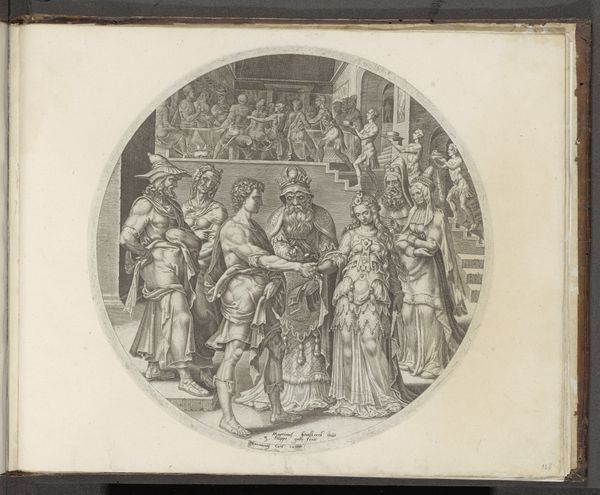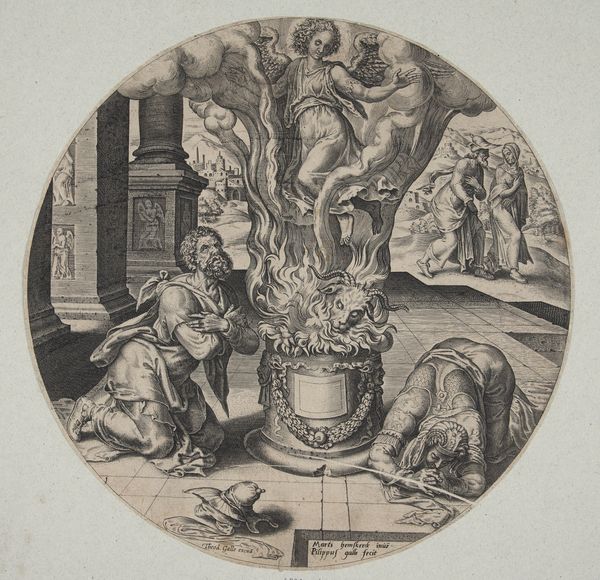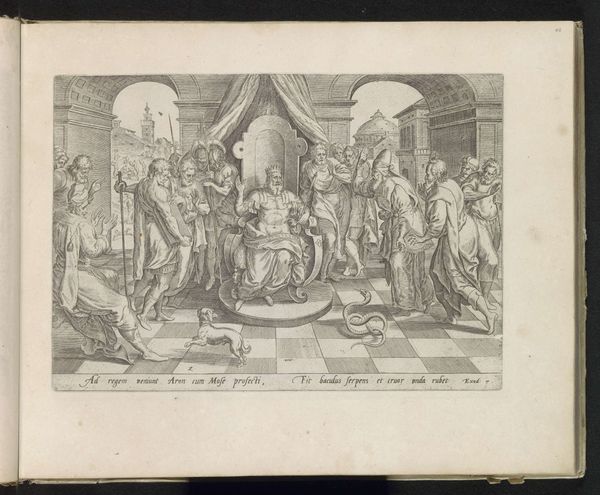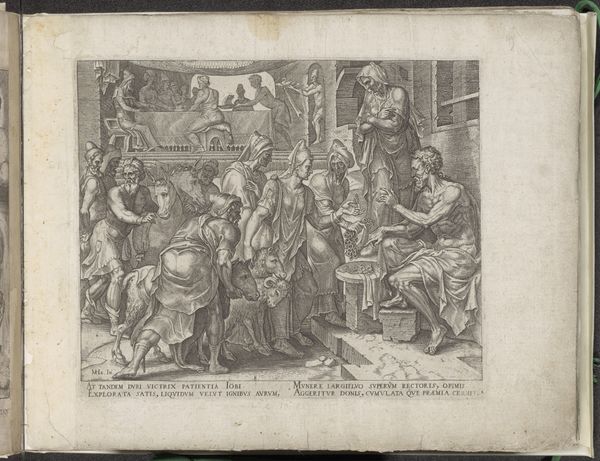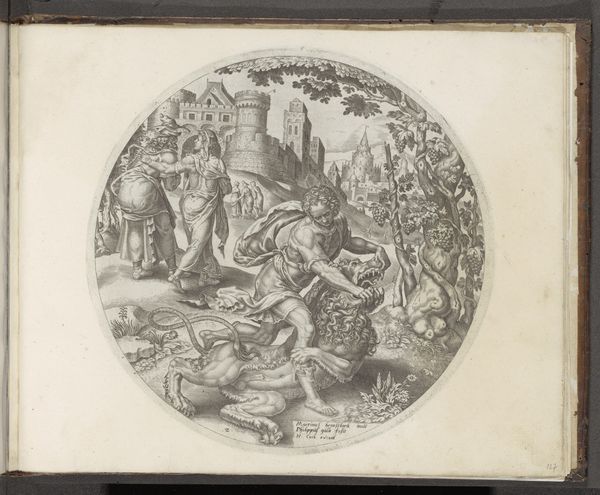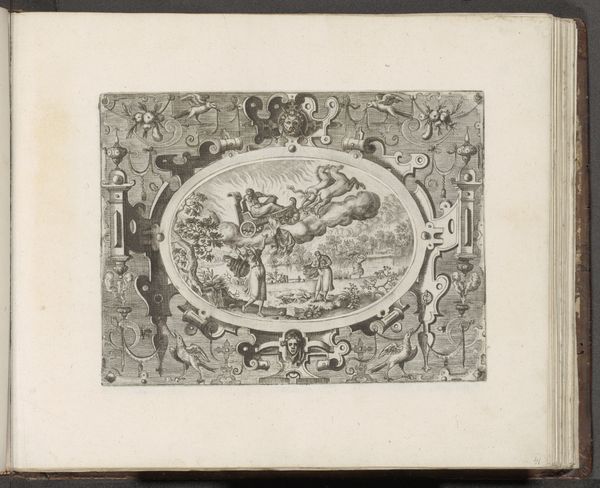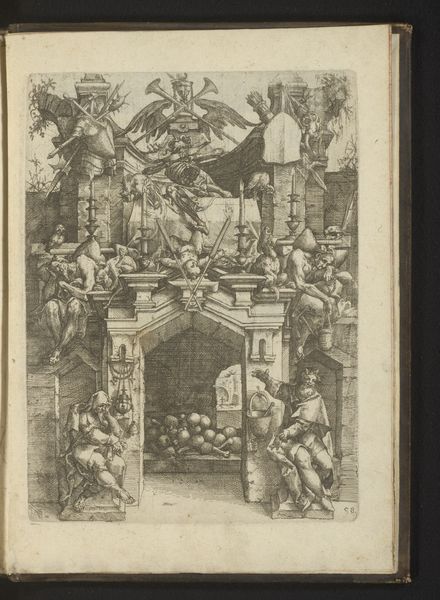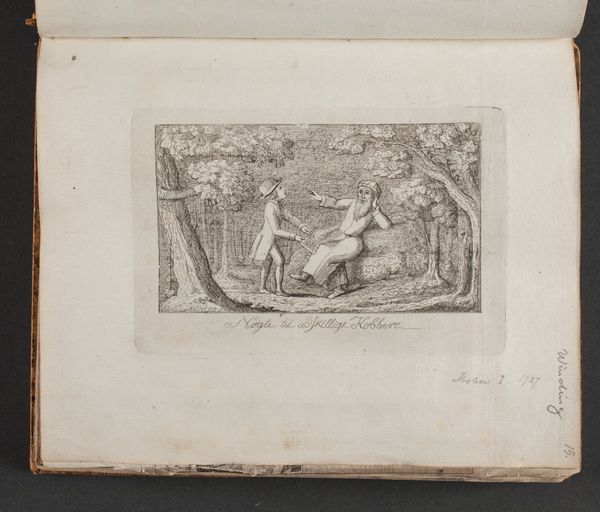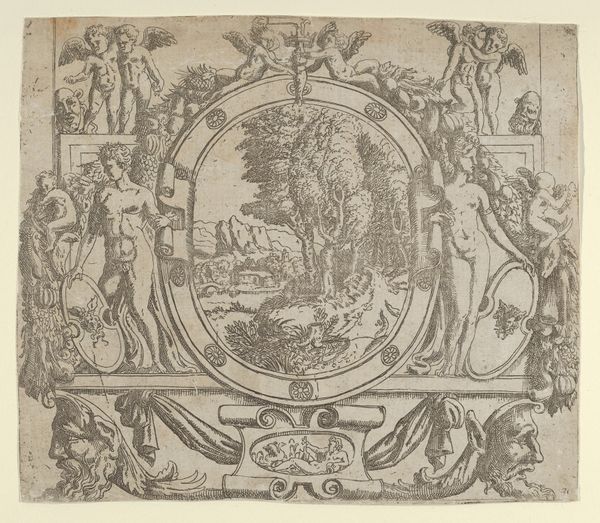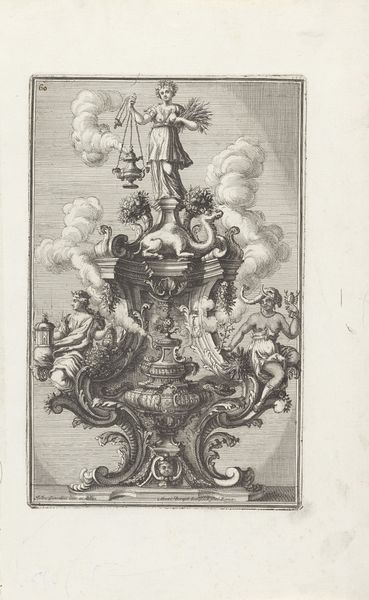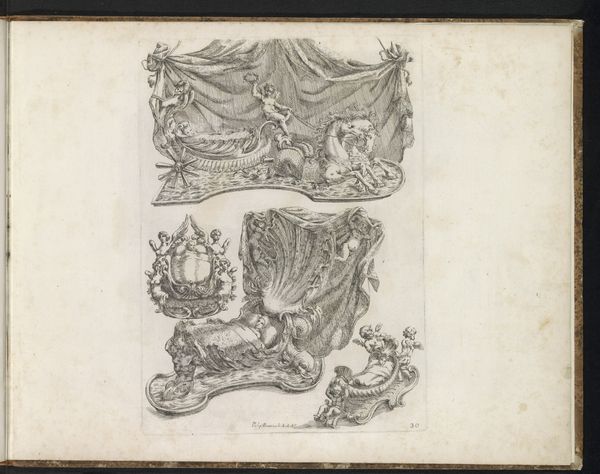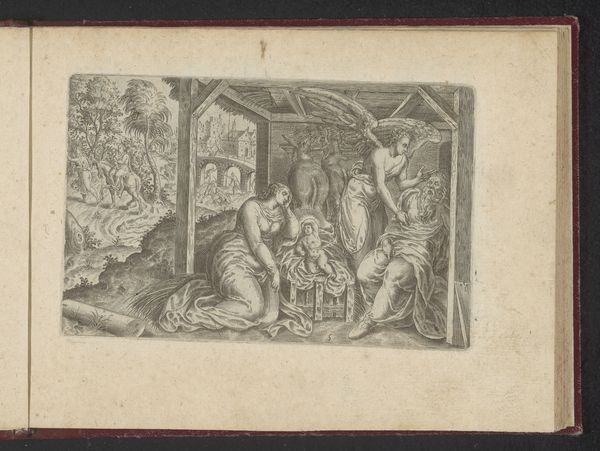
print, paper, engraving
#
narrative-art
# print
#
mannerism
#
figuration
#
paper
#
engraving
Copyright: Rijks Museum: Open Domain
Curator: Welcome. Today we’re exploring "Offer van Manoach," a Mannerist engraving dating from 1558 to 1579, made by Philips Galle, residing here at the Rijksmuseum. The medium, black ink on paper, captures a tense biblical scene. What are your first thoughts? Editor: The composition strikes me as dramatic. It is not immediately welcoming but foreboding, with kneeling figures seemingly pleading before some spectacle occurring at center stage. Curator: Indeed. Galle meticulously renders the moment the Angel ascends from Manoach's sacrificial offering. Manoach and his wife prostrate themselves—they finally understand the divine nature of their visitor, previously believed merely a prophet. It's interesting how their reactions become a testament to the angel's divinity. Editor: Seeing this engraving in the context of 16th-century religious and social upheaval really heightens its resonance for me. How did displays like this potentially reinforce existing hierarchies? Manoach, kneeling, represents a complete surrender to an unknowable power. It reads like political propaganda almost. Curator: Absolutely. And observe the placement of the angel rising from what almost appears a lion's mouth altar. It’s very deliberate symbolism meant to evoke the raw power and perhaps even fearsome presence of the divine. Lions were commonly used in the period's iconography to denote strength and royalty. It’s cultural memory being actively deployed here to legitimize spiritual authority. Editor: Yes, I see the layers, each building toward an assertion of dominance. How do you interpret the presence of Manoach's wife in this image? Is she simply a bystander to the encounter, or does she also play a vital role? Curator: That's an astute question. While her subservient posture does reflect period gender roles, scripture places her centrally in this narrative. Remember it was the wife who first met the angel. The artist could be acknowledging her spiritual insight while reinforcing the social expectations for women through the compositional arrangement. Editor: A nuanced read, acknowledging complexities. The more we examine the art and the layers upon layers of references present, it underscores art’s potent, even manipulative power, within culture. It is capable of dictating acceptable modes of being to its audience, through familiar cultural stories and archetypes. Curator: Precisely. Thank you for exploring these threads. The visual vocabulary of Galle creates a truly memorable depiction—one which challenges us to consider the dynamics between divine authority and humanity. Editor: Agreed. And how historical artwork still informs, or is incorporated in contemporary narratives and their political frameworks. Food for thought.
Comments
No comments
Be the first to comment and join the conversation on the ultimate creative platform.
